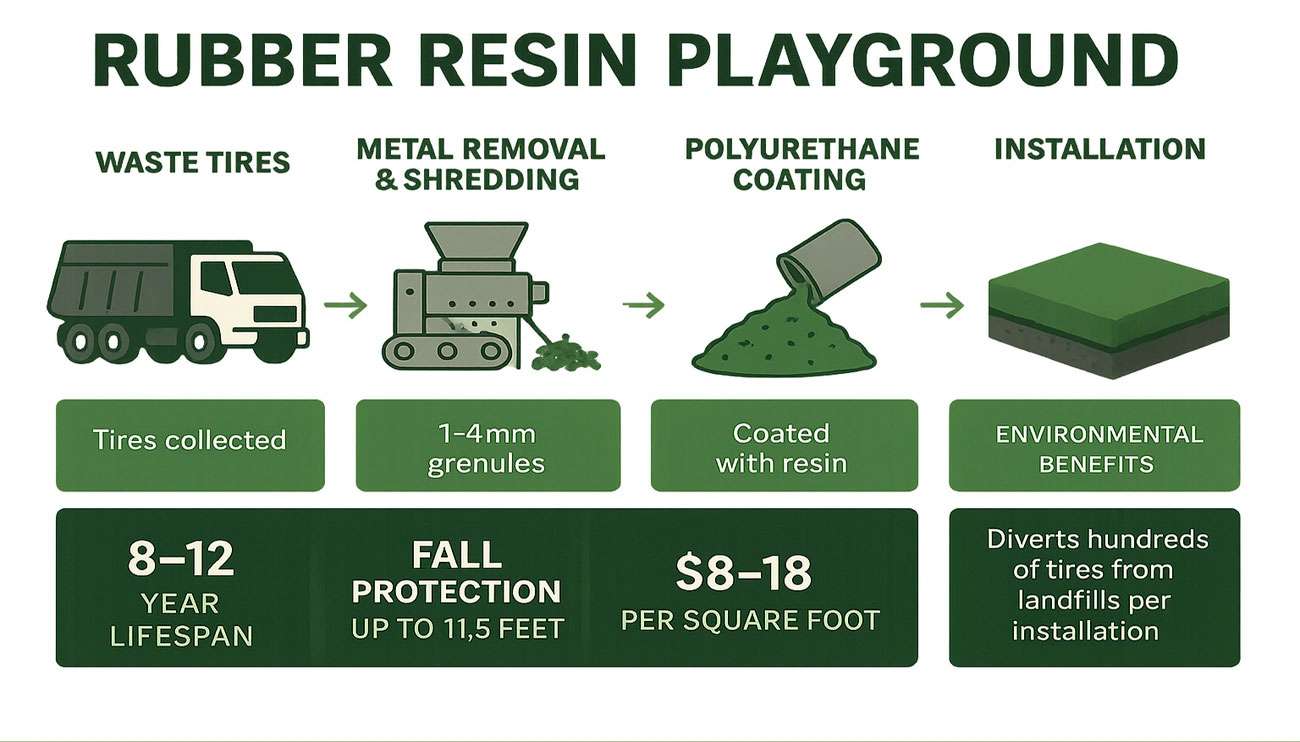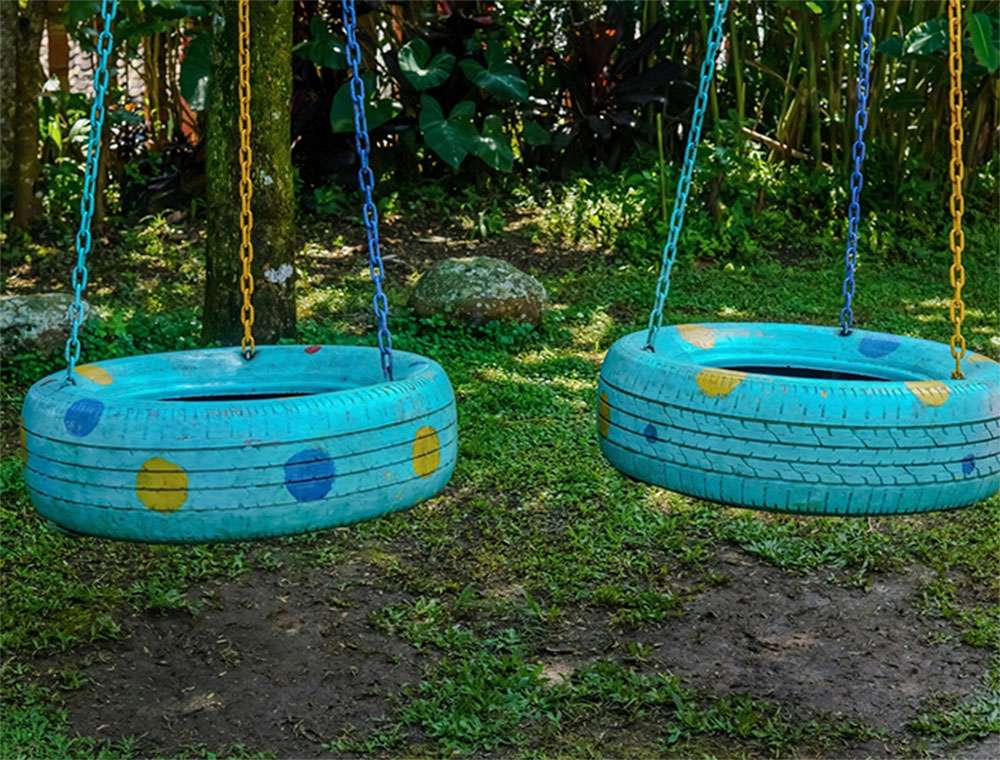
Got old tires from your recent vehicle upgrade? You're facing the same challenge as millions of other drivers. The United States discards a staggering 246 to 300 million end-of-life tires annually [10] [10], creating a massive environmental challenge that demands immediate attention.
Old tires once filled landfills across the country, but recycling has emerged as the smart solution to protect our environment [10]. Today's recycling initiatives have achieved remarkable results - about 90% of used tires now get recycled [10], eliminating the billion-tire stockpiles that once threatened our communities. At Performance Plus Tire, we know proper tire disposal makes a real difference for environmental protection, and we're here to show you exactly how to handle your old tires responsibly.
Crumb rubber becomes playground surfaces and athletic tracks. Tire-derived fuel powers cement kilns and power plants [11]. We'll walk you through the most effective ways to recycle your used tires and give them new life. Whether you have a few worn tires cluttering your garage or you want to make a positive environmental impact, this guide delivers the practical information you need to dispose of tires the right way.
Improper tire disposal creates serious environmental and health hazards that go well beyond basic waste management issues. With approximately 1.5 billion tires produced annually worldwide [1], we're dealing with a problem of massive scale.
Abandoned tires turn into perfect breeding sites for disease-carrying insects. A single tire holds up to 25 gallons of water [2], creating ideal conditions for mosquitoes that spread West Nile virus, dengue, and Zika [3]. These stagnant water pools allow thousands of mosquito larvae to develop, dramatically increasing disease risks for entire communities.
Tire fires present even more serious environmental disasters. When tires burn, they release toxic black smoke loaded with polycyclic aromatic hydrocarbons, benzene, and other cancer-causing chemicals [4]. Every million tires that burn produces approximately 55,000 gallons of oil runoff that contaminates soil and water sources [4]. These fires burn for months or even years, requiring expensive cleanup operations that cost communities millions.
Even tires sitting intact pose contamination risks. Rubber contains over 400 different chemicals [5], many of them carcinogenic, that slowly leach into surrounding soil and groundwater. Tire particles also contribute heavily to microplastic pollution - studies show more than 75% of harmful microplastics come from tires [6].
The EU has already banned tire disposal in landfills [7], recognizing these serious environmental threats. These risks make it clear why finding proper disposal methods for your old tires is essential for protecting both environmental health and community safety.

Image Source: Phoenix Industries
Tire recycling operates through a systematic multi-stage process that converts discarded rubber into valuable materials. Collection facilities first gather end-of-life tires from automotive shops and tire dealerships, then transport them to specialized recycling centers for processing.
The process starts with shredding. Powerful machinery cuts whole tires into smaller pieces, preparing the material for separation while isolating the three main components: rubber (70%), steel (15%), and fiber (3%) [8]. This initial breakdown makes the remaining steps possible.
Recyclers then use one of three proven methods to process the rubber:
Ambient grinding represents the most widely used approach. Mechanical force at room temperature breaks down rubber through granulators and cracker mills. The result is rubber particles with rough, cut surfaces that work perfectly for applications like rubber-modified asphalt.
Cryogenic grinding freezes rubber to approximately -80°C using liquid nitrogen [9]. This makes the material brittle like glass. When shattered, it produces smooth, uniform particles ideal for athletic fields and playground surfaces.
Wet grinding/micro milling creates extremely fine rubber powder (40-200 mesh) by grinding rubber in a water slurry [10]. This specialized process yields the finest particle sizes for specific applications.
Each passenger tire produces 10-12 pounds of recyclable rubber [10]. These processed materials become playground surfaces, construction materials, and dozens of other products. The transformation prevents waste while creating useful resources that serve communities for years to come.

Image Source: Backyard Boss
Old tires don't have to end their journey at recycling centers. Americans discard nearly 281 million tires annually [11], but many of these can serve new purposes through creative repurposing projects that benefit both your household and the environment.
Creative homeowners can turn old tires into stylish furniture pieces. Ottomans, coffee tables, and seating options emerge from simple transformations using paint, rope, or fabric coverings. One entrepreneur's company has already converted over 3,000 tires into modern furniture [12], proving this approach works on both small and commercial scales.
Garden projects offer some of the most practical applications for old tires. They work exceptionally well as planters, raised beds, and retaining walls. However, be cautious about growing vegetables directly in tire planters, as tires may leach harmful chemicals into soil [13]. Consider using them for decorative plants instead.
Families with children can create entertaining playground equipment from discarded tires. Classic tire swings, climbing structures, teeter-totters, and sandboxes provide hours of fun while keeping rubber out of landfills. These projects combine family activity with environmental responsibility.
Your tires might still have value if they retain decent tread depth. Many automotive shops, mechanics, and community organizations accept used tires in good condition to help customers seeking affordable alternatives [14]. This option ensures your tires continue serving their original purpose while helping others save money.
Each repurposed tire represents a win for environmental sustainability and practical creativity. These alternatives extend tire life beyond traditional recycling, offering solutions that match different skills, needs, and household situations.
Proper tire disposal isn't just an environmental nice-to-have—it's an essential responsibility that directly impacts public health and ecosystem protection. The facts speak for themselves: abandoned tires create disease-carrying mosquito breeding grounds, toxic fire hazards, and soil contamination that affects entire communities.
Your disposal choice matters more than you might think. When you choose recycling facilities over landfills, those old tires become valuable resources. Ambient grinding, cryogenic processing, and wet grinding methods turn waste into playground surfaces, athletic tracks, and construction materials that benefit everyone.
Creative repurposing offers another smart path forward. Turn those old tires into furniture pieces, garden planters, or playground equipment that serves your family for years. For tires with decent tread left, donation programs help community members access affordable alternatives while keeping usable materials in circulation.
The tire recycling industry has proven that sustainable solutions work. We've seen remarkable progress from the days when billion-tire stockpiles threatened our landscapes. Now you have multiple options for responsible disposal that align with your values and circumstances.
Ready to make the right choice? Research local recycling facilities, explore repurposing projects that match your skills, or connect with community organizations that accept tire donations. Your decision today shapes the environmental legacy we leave behind—choose the option that turns waste into valuable resources and protects the communities we all share.
Proper tire disposal is crucial for environmental protection and public health, as the US discards 246-300 million tires annually that can create serious hazards when improperly handled.
• Abandoned tires breed disease-carrying mosquitoes and can cause toxic fires that burn for months, releasing carcinogens into air and water.
• About 90% of used tires are now recycled through shredding and processing methods that transform rubber into playground surfaces, athletic tracks, and construction materials.
• Creative repurposing offers eco-friendly alternatives - turn old tires into furniture, garden planters, or playground equipment instead of sending them to landfills.
• Donate tires with decent tread to automotive shops or community organizations to help others access affordable tire alternatives.
• Choose recycling facilities, repurposing projects, or donation programs over landfill disposal to reduce environmental contamination and support sustainability efforts.
Every responsibly disposed tire helps protect our ecosystems and creates valuable resources for future use, making your disposal choice a meaningful contribution to environmental conservation.
You can recycle old tires at specialized recycling centers, tire retailers, or auto shops. Many of these facilities accept used tires for proper disposal and recycling. Alternatively, you can repurpose tires for creative projects or donate those with good tread to community organizations.
Improper tire disposal can lead to serious environmental issues. Abandoned tires become breeding grounds for disease-carrying mosquitoes, pose fire hazards that release toxic chemicals, and leach harmful substances into soil and water. They also contribute significantly to microplastic pollution.
During recycling, tires are shredded and separated into rubber, steel, and fiber components. The rubber is then processed using methods like ambient grinding, cryogenic processing, or wet grinding. These materials are transformed into various products, including playground surfaces, athletic tracks, and construction materials.
Yes, there are many creative ways to reuse old tires at home. They can be transformed into furniture pieces like ottomans or coffee tables, used as garden planters or raised beds, or turned into playground equipment such as tire swings or sandboxes.
A typical passenger tire yields about 10-12 pounds of recyclable rubber. In total, approximately 70% of a tire is rubber, 15% is steel, and 3% is fiber, all of which can be recycled and repurposed into new products.
[1] - https://sensoneo.com/waste-library/how-to-recycle-tires/
[2] - https://www.utires.com/articles/how-are-automobile-tires-recycled/
[3] - https://lionharttires.com/tire-recycling-and-disposal/
[4] - https://www.sciencedirect.com/science/article/pii/S2405844025002890
[5] - https://phoenixrubber.com/problem-of-waste-tires-a-closer-look/
[6] - https://pmc.ncbi.nlm.nih.gov/articles/PMC7666857/
[7] - https://archive.epa.gov/epawaste/conserve/materials/tires/web/html/fires.html
[8] - https://e360.yale.edu/features/tire-pollution-toxic-chemicals
[9] - https://www.swimdrinkfish.ca/fraser-riverkeeper/blog/the-impacts-of-tires-in-our-waters
[10] - https://pmc.ncbi.nlm.nih.gov/articles/PMC10488992/
[11] - https://en.wikipedia.org/wiki/Tire_recycling
[12] - https://www.ecomena.org/crumb-rubber-production-and-uses/
[13] - https://scraptirenews.com/information-center/crumb-rubber/
[14] - https://www.backwoodshome.com/a-new-use-for-old-tires-a-garden-using-tires/
[15] - https://intpolicydigest.org/the-platform/meet-the-young-entrepreneur-upcycling-used-tires-into-ultra-modern-furniture/
[16] - https://www.lushome.com/30-amazing-ideas-reuse-recycle-old-car-tires-creative-recycled-crafts/77738
[17] - https://goodnewsgarage.org/donating-used-tires/